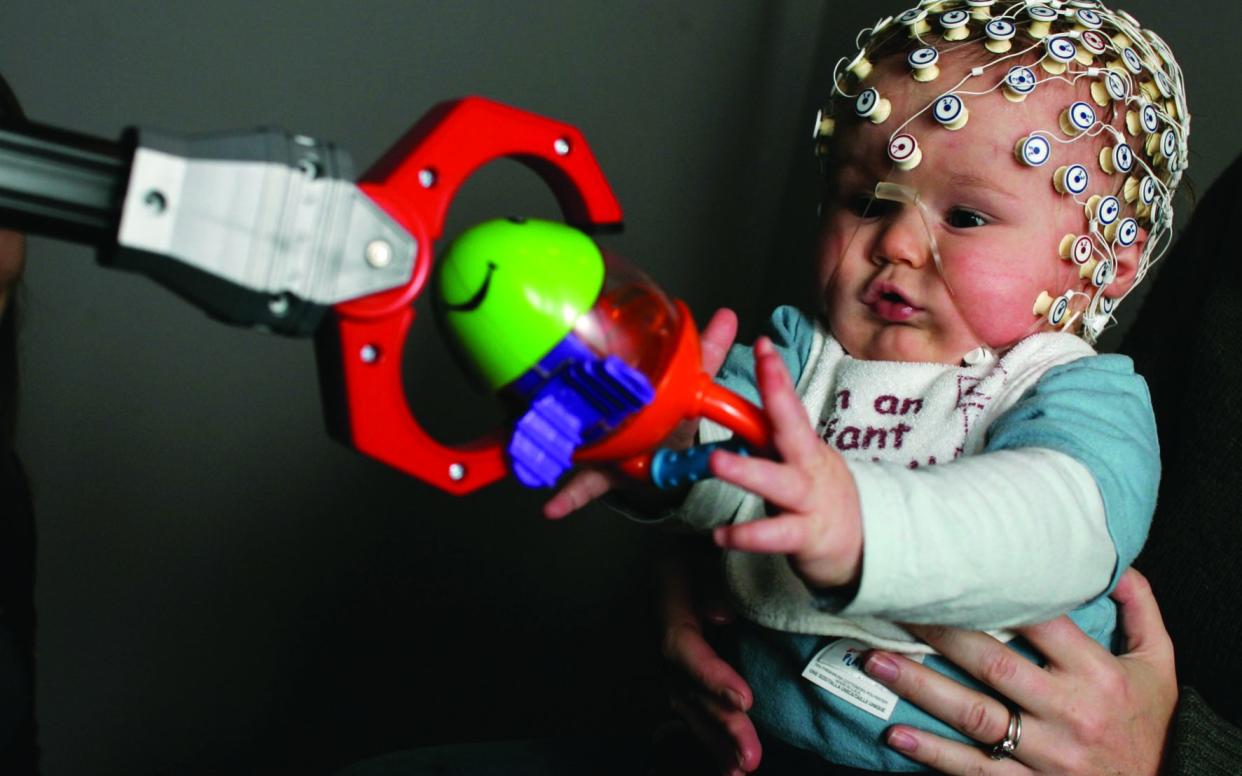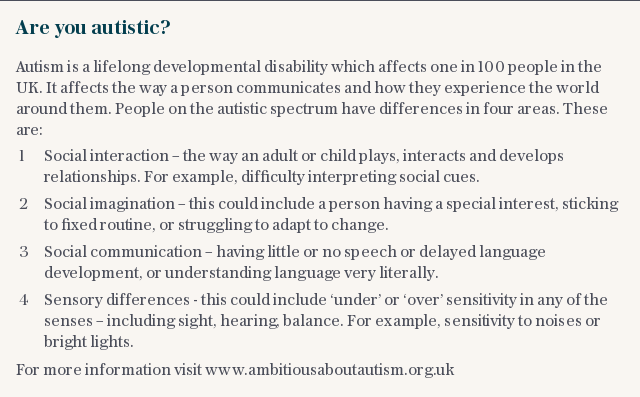How incy-wincy spider could show if your child is autistic

Autismcan be spotted in babies as young as four months old simply by monitoring their response to games such as peek-a-boo or incy-wincy spider, a new study suggests.
Researchers found that babies who will go on to diagnosed with autism spectrum disorder (ASD) as toddlers show lower levels of brain activity when playing interactive social games, or watching people yawn or laugh.
Conversely their brains appear more stimulated by pictures of inanimate objects, such as cars.
Dr Sarah Lloyd-Fox from Birkbeck’s Centre for Brain and Cognitive Development, who led the study, said: “We have found an early indication of different patterns of brain activity in infants who go on to develop ASD.
“Given the importance of responding to others in our social world, it is possible that different attentional biases in babies may impact on the development of social brain responses, which can continue to affect the child’s developmental trajectory as they get older.
“Identifying early patterns of altered development which may later associate with ASD is important, because it will allow doctors to offer earlier interventions and provide families with earlier avenues for support.
“This might mean giving the child and parents new strategies to reengage their attention towards important social cues and learn different ways of interacting.”

ASD is a common developmental disorder thought to affect around 2.8 million people in Britain.
Usually symptoms begin to emerge in toddlerhood, but nobody knew if it was possible to pick them up earlier and so help parents prepare for the condition.
Scientists from Birkbeck, University of London, University of Cambridge, University College London and King’s College London used neuroimaging technology to measure the brain activity of infants aged 4-6 months.
They then compared the scans of babies who had siblings with ASD and those without. Children with a familial link are far more likely to develop the condition.
They studied how the infants’ brain activity changed in response to ‘social’ videos of people, such as people playing peek-a-boo or incy-wincy spider, with ‘non-social’ images of objects such as cars.
They also measured the babies’ brain activity in response to human vocalisations (coughing, yawning, crying and laughing) compared to non-human sounds (bells, water running).
Infants who did not go on to be diagnosed with ASD showed higher levels of activity in response to the social stimuli than the non-social stimuli.
It is the first research to show that functional brain responses before 6 months of age are associated with a later ASD diagnosis at 3 years, meaning these findings could show the earliest marker of ASD to date.
This study is part of a much larger series of longitudinal projects called the British Autism Study for Infant Siblings (BASIS) Network.

 Yahoo News
Yahoo News 
